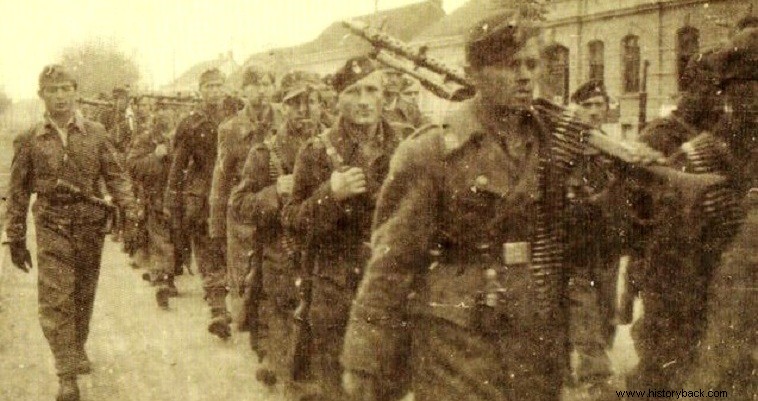
Under the pressure of impending collapse, the Ustasi regime in Croatia was beginning to prepare forces that would continue the war after the inevitable victory of Tito and his partisans. After the end of the war, many Croats fled to Austria and Italy from where they continued their preparations.
With the capitulation and dissolution of the independent state of Croatia, the "Crusaders" began their action. Most of the rebels were members of the fascist and criminal Ustasha , but there were also men who had fought alongside the Germans on the Eastern Front.
Tito's partisans had launched a silent persecution against the Ustasi with OZNA, the partisan Internal Security Force, as the main organ. Croats who were arrested were usually executed immediately. A few were tried and executed or ended up with heavy sentences in prisons and camps. The same fate was reserved for OZNA and the relatives of those arrested.
The "Crusaders" were so named in contrast to "Tito's atheistic communists". Most were Roman Catholics but there were also Bosnian Muslims among them. Their movement was also supported by anti-communist groups and organizations in Spain, Canada, the USA, West Germany and Argentina.
The Yugoslav State Security Service (UDBA) however blamed the Croatian Peasant Party and the Roman Catholic clergy for the formation of the "Crusaders", which was probably not the case for this moderate Croatian party. The flag of the "Crusaders" had inscribed on it the phrase:"For Croatia and Christ against the Communists", on one side and "En tuto Nika" on the other.
Pursuing
Guerrilla activity began in the summer of 1945 and spread mainly to Dalmatia and a few other provinces. Their main targets were communist officials and military . They carried out attacks against soldiers and policemen, but also against Koloktivist farms and other infrastructure.
Tito's regime quickly realized the threat and, fearing the return from Austria and Italy of the approximately 60,000 Ustasi it believed had taken refuge there, reacted immediately. In August 1945 Tito granted an amnesty and a large number of Croats laid down their arms.
But not the most hardened or the most guilty ones like Viekoslav Luburic , in charge of the Croatian death camps during the war, who also assumed command of the "Crusaders". After the expiry of the amnesty deadline, OZNA took intensive action against the remaining rebels using "repentant" Ustasi with the prospect of erasing their action. The "repentant" many times cooperated but then OZNA executed them by not honoring its promises.
OZNA also pursued the relatives of the rebels, while there were even relocations of entire villages and deportations to the small islands of the Dalmatian coast or to Yugoslav replicas of the gulags. However, the Tito regime refused to admit, officially, the existence of the rebels. At the same time, however, operations were being carried out and Austria and Italy were accused of supporting the "Crusaders".
In the winter of 1945-46 OZNA and Yugoslav army carried out extensive clearance operations which resulted in the extermination of many insurgents. Insurgents carried out a raid against the army in the Velebit mountains, killing 10 soldiers. However the balance of losses was dramatically against them. In 1946 840 "Crusaders" were killed and only about 550 remained in action.
In 1947 the "Crusaders" killed 38 of their opponents but lost 20 times as many men and their relatives. Essentially, the guerrilla movement had been suppressed. Nevertheless, operations continued and in 1948 the authorities estimated that only a group of 67 insurgents remained active. The next year the movement died out completely under the suffocating pressure of the regime and the extremely harsh repressive measures against the families of the rebels and any suspected sympathizers.
Thousands ended up in prisons and camps. However, the leader of the rebels, the criminal Luburic, escaped to Spain where he was murdered in Spain by Yugoslav agents in 1969.
